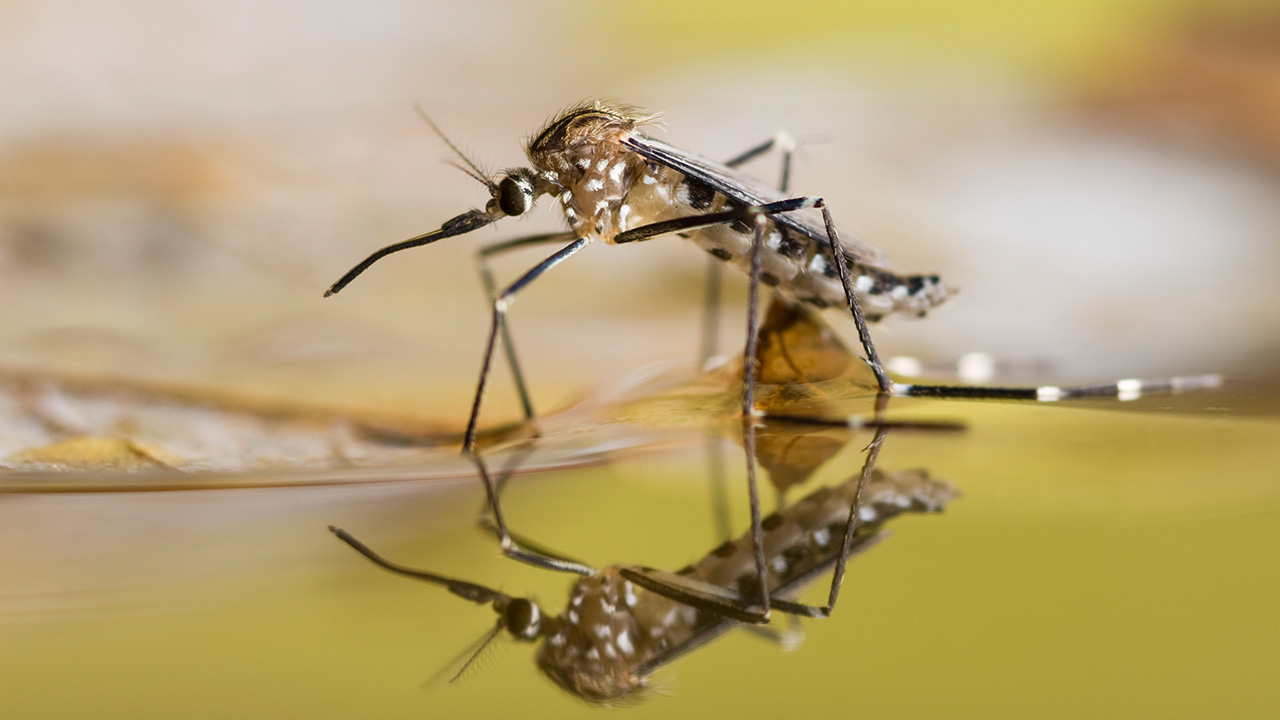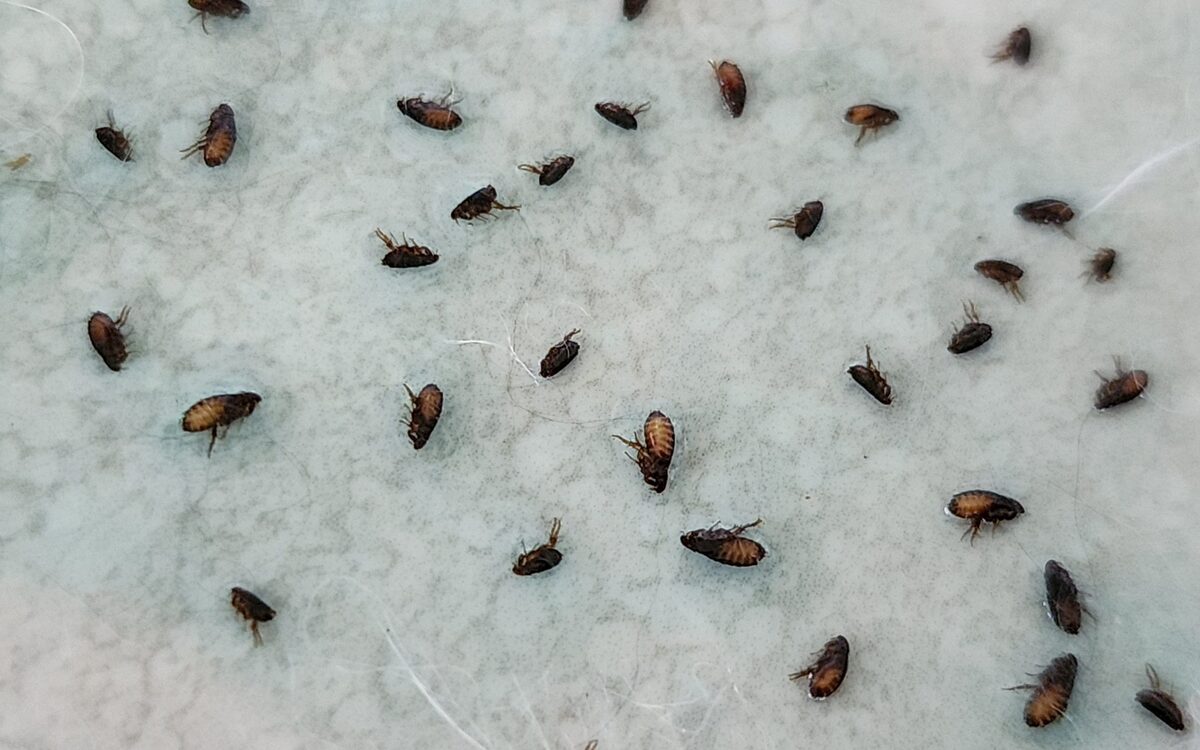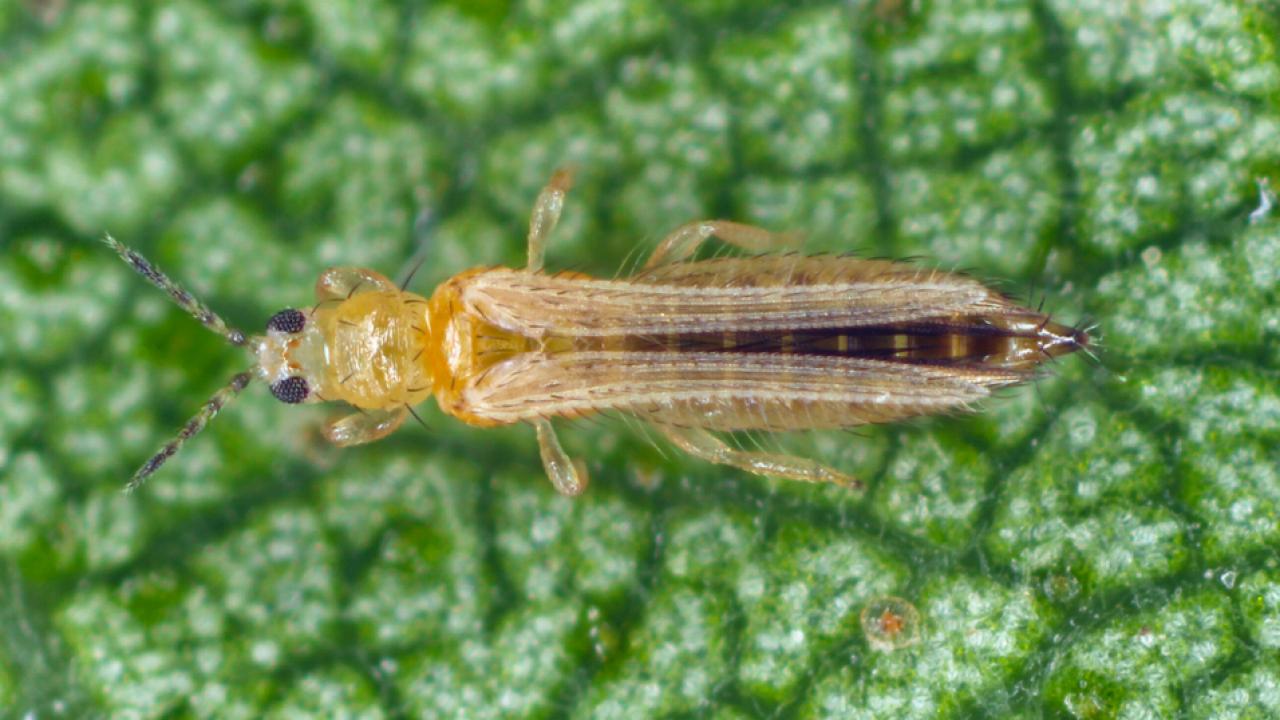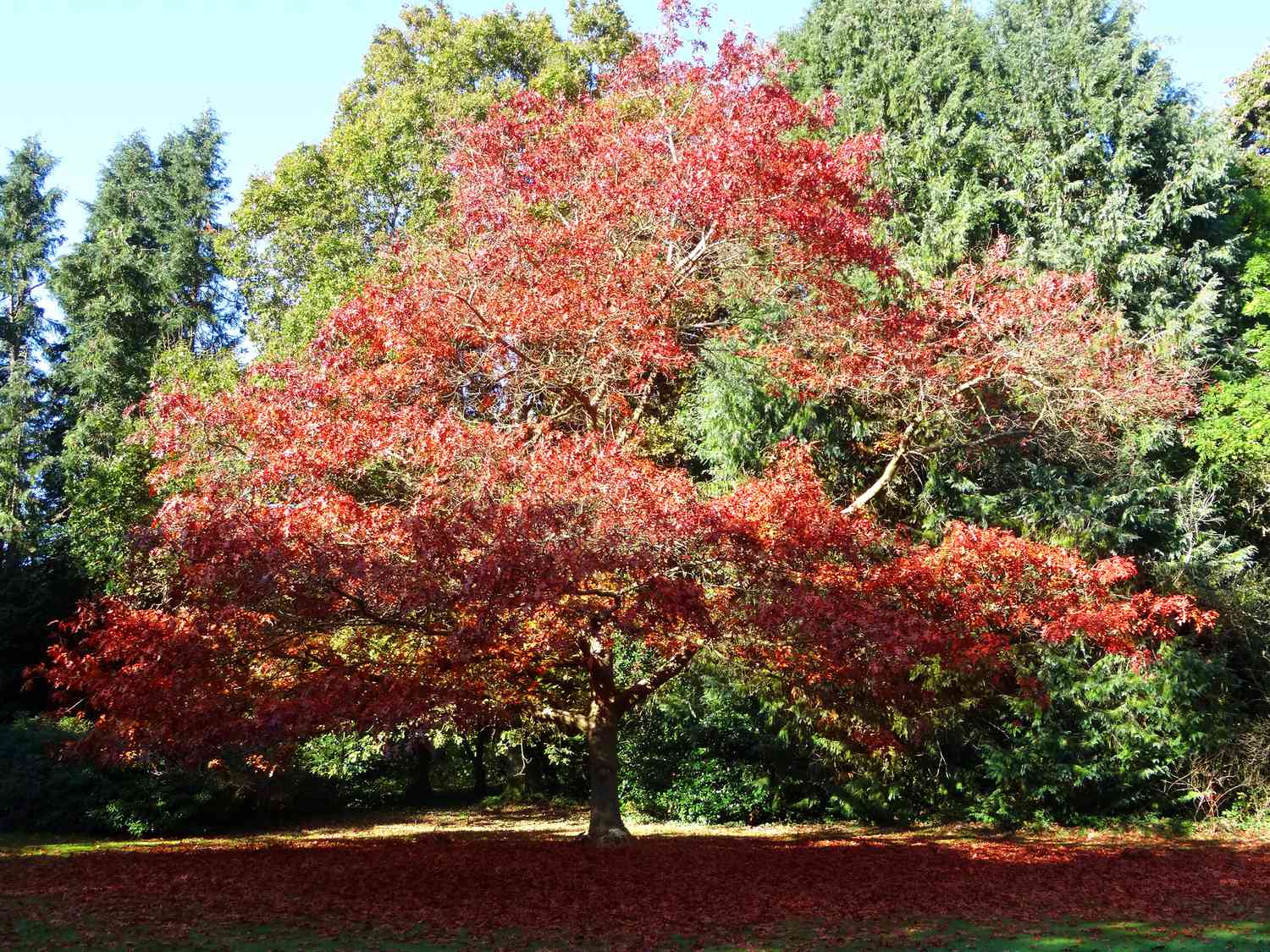Home>Gardening News and Trends>Latest News>What Insects Do Bay Leaves Repel


Latest News
What Insects Do Bay Leaves Repel
Modified: January 22, 2024
Discover the Latest News on What Insects Do Bay Leaves Repel. Find out how bay leaves can naturally repel insects and keep your home bug-free.
(Many of the links in this article redirect to a specific reviewed product. Your purchase of these products through affiliate links helps to generate commission for Chicagolandgardening.com, at no extra cost. Learn more)
Table of Contents
Introduction
Welcome to our comprehensive guide on using bay leaves as an insect repellent! With their fragrant aroma and potent properties, bay leaves have long been considered a natural and effective way to keep pesky insects at bay. Not only do they add flavor to our culinary delights, but these versatile leaves can also be used to repel a wide range of insects, making them a popular choice for those seeking a chemical-free solution.
Bay leaves come from the bay laurel tree, scientifically known as Laurus nobilis. Native to the Mediterranean region, this evergreen tree produces small, fragrant leaves that are commonly used in cooking to enhance the flavor of soups, stews, and sauces. However, it’s their innate ability to repel insects that has caught the attention of many homeowners and gardeners.
Using bay leaves as an insect repellent offers numerous benefits. Firstly, it is an eco-friendly and natural alternative to chemical-based insecticides, reducing your exposure to harmful toxins. Secondly, bay leaves are readily available and easily accessible, making them a cost-effective solution. Lastly, using bay leaves not only repels insects but also adds a pleasant aroma to your surroundings.
In this article, we will explore the various types of insects that bay leaves can repel, discuss the methods of using bay leaves effectively, and provide some precautions and considerations to keep in mind.
So, if you are tired of dealing with annoying insects and want to explore a natural and aromatic way to keep them away, read on to discover the wonders of bay leaves as an insect repellent!
Benefits of Using Bay Leaves as an Insect Repellent
Using bay leaves as an insect repellent offers a range of benefits that make it an attractive alternative to chemical-based solutions. Let’s explore some of the key advantages:
- Natural and Eco-Friendly: One of the main advantages of using bay leaves is that they are all-natural and do not contain any harmful chemicals or toxins. This makes them a safe and environmentally friendly option for repelling insects, especially for those who are conscious of reducing their impact on the environment.
- Cost-Effective: Bay leaves are a cost-effective insect repellent as they are readily available, inexpensive, and can be easily obtained from grocery stores or grown in your own backyard. This makes them a budget-friendly choice, especially compared to commercial insect repellents that can be quite expensive.
- Pleasant Aroma: In addition to repelling insects, bay leaves emit a pleasant and distinctive aroma. When used in your surroundings, they can contribute to a more pleasant and fresh-smelling environment. This is particularly beneficial for outdoor areas or indoor spaces where insects are commonly found.
- Versatile: Bay leaves can repel a wide range of insects, making them a versatile solution. They are known to be effective against mosquitoes, flies, moths, ants, cockroaches, and other common pests. This versatility makes bay leaves a valuable addition to your pest control arsenal.
- Non-Toxic: Unlike chemical-based insect repellents, bay leaves are non-toxic and pose no risk to humans or pets. This is particularly beneficial for households with children or pets, as it eliminates the worry of applying potentially harmful chemicals in their living spaces.
By harnessing the natural properties of bay leaves, you can enjoy an effective and safe insect repellent that offers a range of benefits. From being budget-friendly to emitting a pleasant aroma, bay leaves provide a natural and eco-friendly solution to keep insects away from your home or garden.
Types of Insects Repelled by Bay Leaves
Bay leaves are known to be effective in repelling various types of insects. Let’s take a closer look at some of the common pests that can be deterred by using bay leaves:
- Mosquitoes: Bay leaves emit a strong and distinct aroma that mosquitos find repulsive. Placing crushed or dried bay leaves near windows, doorways, or outdoor seating areas can help keep mosquitoes at bay and prevent them from entering your living spaces.
- Flies: The strong scent of bay leaves is also effective in repelling flies. Simply place bay leaves in areas where flies tend to congregate, such as near trash cans or outdoor dining areas. This will help deter them from landing and reduce the annoyance caused by these pesky insects.
- Moths: Moths are notorious for damaging clothing and fabric. Placing bay leaves in your closets, drawers, or storage areas can help repel moths and prevent them from laying their eggs on your clothes or fabrics. This is particularly useful for protecting your favorite garments and avoiding the frustration of finding moth holes.
- Ants: Ants are common household pests that invade our kitchens and pantries in search of food. The scent of bay leaves acts as a natural deterrent, preventing ants from entering your living areas. Placing bay leaves near entry points, such as doors, windowsills, or cracks where ants may enter, can discourage their presence.
- Cockroaches: Bay leaves are known to repel cockroaches due to their strong scent. Placing bay leaves in areas where cockroaches are commonly found, such as underneath sinks, in cabinets, or behind appliances, can help discourage their presence and prevent infestations.
These are just a few examples of the insects that can be effectively repelled by bay leaves. Whether you’re dealing with mosquitos, flies, moths, ants, or cockroaches, incorporating bay leaves into your pest control strategy can help create a barrier that keeps these unwanted visitors at bay.
How to Use Bay Leaves to Repel Insects
Using bay leaves to repel insects is a simple and effective process. Here are some methods you can try:
- Crushed Bay Leaves: Take a handful of dried bay leaves and crush them into smaller pieces. Scatter the crushed leaves around areas where insects are commonly found, such as windows, doorways, or outdoor seating areas. The strong fragrance will help repel insects and keep them away from your living spaces.
- Bay Leaf Sachets: Create small sachets by placing whole bay leaves inside a porous bag or cloth. Hang these sachets in areas where insects are a nuisance, such as closets, pantries, or near windows. The scent released by the bay leaves will deter insects and prevent them from entering your storage spaces or infesting your belongings.
- Bay Leaf Spray: Another method is to make a bay leaf spray by boiling a handful of bay leaves in water for a few minutes. Allow the mixture to cool and transfer it to a spray bottle. Spray this solution around entry points, outdoor areas, or anywhere you want to deter insects. Reapply the spray as needed to maintain its effectiveness.
- Bay Leaf Infused Oil: Infusing oil with bay leaves can create a potent insect repellent. Place dried bay leaves into a jar and pour a carrier oil, such as olive or almond oil, over them. Seal the jar and let it sit for a few weeks in a cool, dark place. Strain the oil and transfer it to a spray bottle or small container. Apply the oil to your skin or surfaces to repel insects.
- Bay Leaf Potpourri: Create a bay leaf potpourri by mixing dried bay leaves with other aromatic ingredients like lavender, rosemary, or citrus peels. Place this mixture in a decorative bowl or sachet and display it in areas where insects are a problem. Not only will it repel insects, but it will also add a pleasant fragrance to your surroundings.
Experiment with these methods to find the one that works best for your specific insect problem. Remember to replace or refresh the bay leaves periodically to ensure their effectiveness. Additionally, it’s important to note that while bay leaves can help repel insects, they may not eliminate an existing infestation. In such cases, it’s best to seek professional pest control assistance.
By utilizing these simple methods, you can harness the power of bay leaves to naturally repel insects and create a more pest-free environment.
Precautions and Considerations
While bay leaves are generally safe and non-toxic, there are some precautions and considerations to keep in mind when using them as an insect repellent:
- Allergies: Some individuals may have allergies or sensitivities to bay leaves. If you or anyone in your household has a known allergy to bay leaves or related plants, it is best to avoid using them as an insect repellent. Consider alternative methods to repel insects that are safe and suitable for your specific allergies.
- Proper Placement: To maximize the effectiveness of bay leaves as an insect repellent, ensure that they are placed strategically in areas where insects are likely to enter or congregate. This includes doorways, windowsills, outdoor seating areas, and near trash cans or food storage areas.
- Regular Replacement: Over time, the scent of bay leaves will diminish, reducing their effectiveness in repelling insects. It is important to regularly replace or refresh the bay leaves to maintain their potency. Replace dried bay leaves every 2-3 months and crushed leaves or sachets every 4-6 weeks.
- Cleaning and Hygiene: While bay leaves can repel insects, they are not a substitute for proper cleaning and hygiene practices. Ensure that your living spaces and storage areas are kept clean to minimize the presence of bugs. Regularly clean countertops, dispose of trash properly, and seal food containers tightly.
- Additional Pest Control Measures: Depending on the severity of the insect problem, it may be necessary to implement additional pest control measures alongside using bay leaves. For more serious infestations, consult with a professional pest control service to address the issue effectively.
It’s important to remember that while bay leaves can be effective in repelling insects, they may not provide 100% protection against all types of pests. Their effectiveness may vary depending on the specific species of insects and the environmental conditions.
Lastly, always ensure that you are using genuine bay leaves from the Laurus nobilis plant. Some other plants may be marketed as “bay leaves,” but they may not have the same repellent properties.
By taking these precautions and considerations into account, you can safely and effectively use bay leaves to repel insects and create a more pest-free environment.
Conclusion
Incorporating bay leaves as an insect repellent is a natural, cost-effective, and environmentally friendly solution to keep pesky bugs at bay. The strong aroma and natural compounds found in bay leaves make them an effective deterrent against a variety of insects, including mosquitoes, flies, moths, ants, and cockroaches.
By using crushed bay leaves, creating bay leaf sachets, preparing bay leaf sprays, infusing oil with bay leaves, or making bay leaf potpourri, you can harness the power of these versatile leaves to repel insects and create a more pest-free environment.
While using bay leaves as an insect repellent offers numerous benefits, it’s important to keep certain precautions in mind. Allergies to bay leaves should be considered, and proper placement and regular replacement of the leaves are necessary to maintain their effectiveness. Bay leaves should complement regular cleaning and hygiene practices, and in more severe infestations, additional pest control measures may be required.
However, with these considerations in mind, using bay leaves as an insect repellent can provide a safe and natural alternative to chemical-based solutions. By reducing your exposure to harmful toxins and embracing a more eco-friendly approach, you can repel insects while enjoying the pleasant aroma that bay leaves bring.
So, if you’re looking for a natural and aromatic way to keep insects at bay, give bay leaves a try. Discover the wonders of this humble herb and create a more pest-free environment for you and your family.










